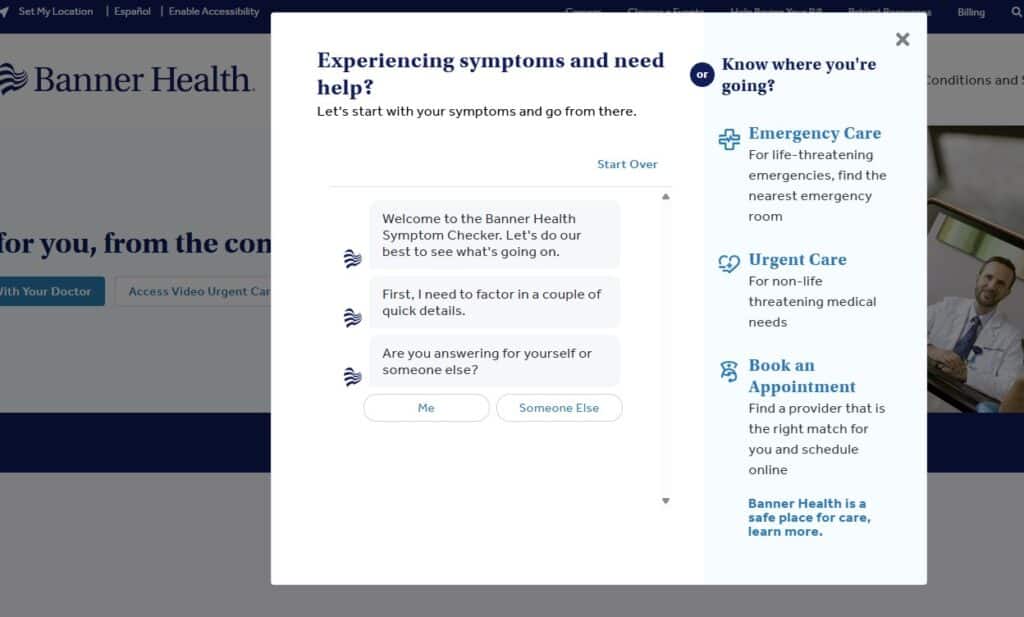Summary
- Most Americans struggle with understanding health information, making it crucial for healthcare marketers to communicate clearly.
- Strategies like adding context to data, streamlining user journeys, and supplementing video content with text make healthcare information accessible to all readers.
Is your content clear to all of your readers?
You follow all the best practices in your content: writing in plain language, using visuals, giving examples, demonstrating expertise…
So your content should make sense to just about everyone, right? In an ideal world (and a non-technical industry), yes. But this is healthcare. And it’s not that simple.
Most healthcare consumers in America struggle with health literacy and numeracy, which makes it difficult for them to process health information (like your content).
Fortunately, there are ways you can help.
What are health literacy and numeracy?
Health literacy is the ability to understand and use basic health information to make care decisions. Patients with proficient health literacy can read a health blog or take-home instructions and grasp the key takeaways without much mental strain.
Health numeracy refers to quantitative skills involved in healthcare decision-making. Patients with proficient health numeracy skills can generally understand the implications of statistics and percentages as well as other types of data. More importantly, they can apply that data to their own health and use it to make informed decisions.
Barriers to health literacy and numeracy
Data on American health literacy and numeracy is limited. The last study on the topic, the National Assessment of Adult Literacy (NAAL), which was published in 2006, found that only 12% of American adults have proficient health literacy.
In other words, nearly 9 out of 10 people struggle to make sense of healthcare information, including marketing content, patient education materials, care instructions, and medical bills.
Dr. Andrew Pleasant, Director of Health Literacy and Communication at the Canyon Ranch Institute weighs in on the implications of this research in a PDF released by the CDC:
Examples of health literacy and numeracy challenges
What do these findings really mean?
To start, people with lower health literacy and numeracy might put off preventive care because they don’t feel sick. During an appointment, they may feel intimidated and not ask questions, preventing them from learning what they need to know to care for themselves. Even worse, they may quit treatments when they run into obstacles — or avoid beginning treatments altogether due to lack of understanding.
There are several ways that barriers to health literacy can impact patient health outcomes. For example, people who struggle with health literacy might not:
- Know what issues require urgent care or emergency care vs. issues that can be handled with a phone call
- Realize how general health library content applies to their specific circumstances
- Understand care instructions after a procedure
- Know how to refill their medications and may end up experiencing a medical emergency (for example, if a person with diabetes encounters difficulty getting insulin refills)
Likewise, people who struggle with health numeracy might not:
- Interpret data correctly, such as the risks associated with recommended treatments or the likelihood of being diagnosed with a hereditary condition
- Understand how their insurance works, how much they have to pay for care, or the financial consequences of seeing an out-of-network provider
- Feel comfortable keeping track of dates, times, doses, and other measurements
- Know what lab results mean (for example, is a “negative result” bad or good?)
- Understand food labels well enough to know whether they are consuming enough fiber or too much sodium
5 health literacy writing interventions
When your messages fail to reach your readers, it doesn’t only hurt your marketing efforts. It can negatively impact patient health outcomes.
Writing in plain language is a first defense for reaching readers of all levels of proficiency. But even when we’ve done our best to simplify messaging and remove jargon, there may still be people who don’t understand our content.
How can you reach them? Implement these health literacy interventions in your writing.
Prefer to watch instead? This health literacy video for healthcare marketers covers what you need to know.
1. Put data into context
There’s a growing need to infuse data into our content. Just look at the 2021 CMS Price Transparency Rule, which mandates public reporting of consumer costs for healthcare services.
Related: Learn how to demystify hospital price transparency for consumers.
But this doesn’t mean to just drop data and run. Content peppered with numbers can confuse users with low health numeracy. They may struggle to make sense of quantitative content — especially without context in plain language.
Include resources that help these users understand what the numbers mean and show how the data is relevant to them.
2. Streamline the user journey on your website
Users with high health literacy want multiple options for interacting with your brand online:
- Find a doctor
- Make an appointment
- Schedule a virtual visit
Having multiple jumping-off points from a single page isn’t likely to faze them. But this approach can overwhelm users with lower health literacy.
You want to please users who appreciate having choices, but you don’t want to lose those who prefer simplicity. Reach both by including online way-finding features.
Check out how Banner Health connects people with services using the Get Care Now feature. It clearly guides the user journey with a clean interface and minimal text. (Talk about a positive user experience.)
3. Supplement video content with writing
Our brains process visual content faster than words, so healthcare marketing videos can help people understand complex topics.
However, video content often requires broadband internet, and 19 million Americans live in areas without broadband. This includes as many as a quarter of the population in rural areas. For them, this content is out of reach.
If you include a video to help with health literacy, make sure all mission-critical info is also in easy-to-understand written content.
4. Create smooth online transitions
As hospitals add features like video visits, online bill pay, and scheduling to their sites, users are more likely to end up on a third-party vendor’s platform. This can be unsettling. Vendor sites often have a different look and feel. People may think they’ve landed on the wrong page and bounce.
Let users know before sending them to a vendor’s site. And provide them with information beforehand that allays their concerns about privacy and security. Check out the detailed video visit FAQs that University of Pittsburgh Medicine provides for their users.
5. Give extra care to confusing topics
Clarity is crucial when patients are faced with challenging news or new information.
During the COVID-19 pandemic, we shared information with the public about risks, precautions, and guidelines. It’s easy to assume that audiences became familiar with COVID-19 since it had been prevalent for a while.
However, COVID-19 information frequently included data, new findings, and shifting recommendations. These were challenging ideas for people with low health literacy. Combat the potential confusion by frequently addressing common questions and concerns.
Need a hand? Partner with healthcare content writers who know how to reach readers of all health literacy levels.
Reach more readers
We tell you how to create accessible, engaging, high-converting healthcare content. (2-3 times/month, tops.)
Subscribe to our newsletter to stay informed.



